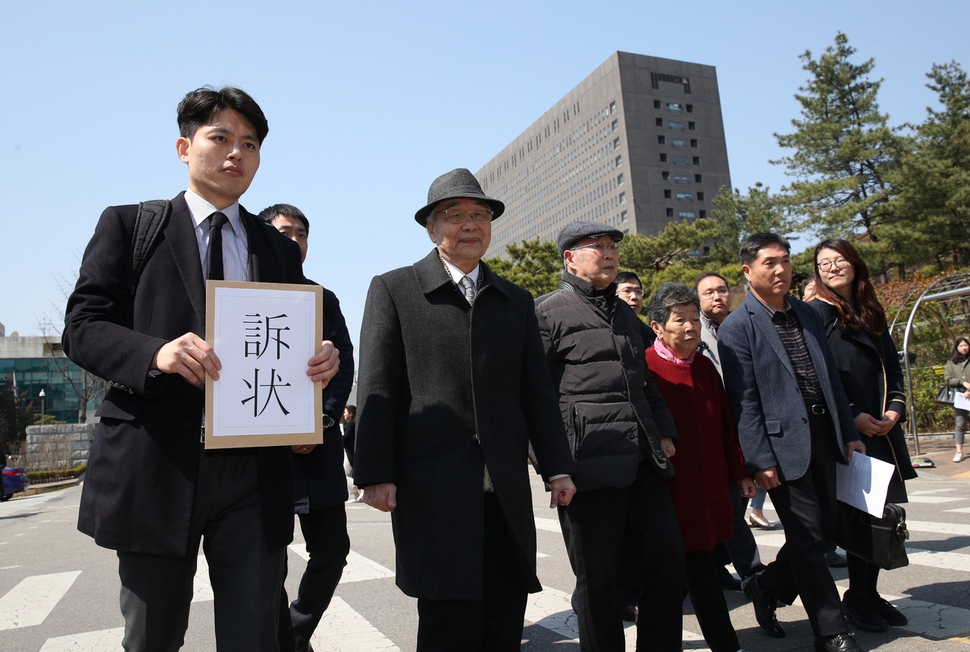 |
|
Kim Yong-hwa (front row, second from left) and Kim Han-su, victims of forced labor under the Japanese occupation, head to the courts to file additional lawsuits against Japanese firms on Apr. 4. (Kim Bong-gyu, staff photographer)
|
Statute of limitations set to become key issue as more suits arise
“When I look back [on the past], there are feelings that come welling up from inside me. When a person is born into this world, they ought to be embraced in love regardless of their circumstances, yet it doesn’t seem like the people of Japan were like that in the past. I just feel like if Japan were to show remorse, [South Korea and Japan] could be warm friends in the future.” Kim Han-su – aged 101 years, making him the oldest of the survivors of forced labor mobilization by imperial Japan – shared these thoughts in a press conference at Beobwon (Courthouse) Junction in Seoul’s Seocho neighborhood on the morning of Apr. 4 to announce the filing of an additional lawsuit in connect with the mobilization. An only son, Kim had gone to work at the tobacco and ginseng office after hearing rumors that employees would not be conscripted. Deceived by the office’s excuses about needing lumber transported, he was ultimately drafted into forced labor alongside 200 other young Korean men, working under arduous conditions in 1944 at the Mitsubishi shipyard in Nagasaki. In all, 31 forced labor survivors and family members decided to file additional lawsuits that day. Consisting of a total of four survivors alongside 27 family members of six victims who previously passed away, they plan to file eight suits against Nippon Steel & Sumitomo Metal (formerly Nippon Steel), Fujikoshi, Mitsubishi Heavy Industries, and Nippon Coke & Engineering, among others. A team of legal representatives for forced labor mobilization lawsuits, consisting of 12 attorneys from the group MINBYUN-Lawyers for a Democratic Society, previously held a briefing on litigation last January before meeting with around 200 survivors and family members to plan for the additional suits. “The legitimacy of lawsuits by forced labor mobilization victims against Japanese companies was reaffirmed in 2018 by a full bench Supreme Court ruling,” the team said. “Today is the just the start of additional legal action to come,” it promised, suggesting that more Japanese businesses implicated in past war crimes will be subjects in future lawsuits. Another survivor, 90-year-old Kim Yong-hwa, recalled, “My teeth were all knocked out when I was hit by metal while working at the [Nippon Steel] steelworks [in Yahata].” “Back then, if Japan ordered you to do something, you did it. Before any matter of compensation, Japan needs to apologize,” he stressed. The statute of limitations on claiming damages will become a key question as more and more lawsuits arise. Civil suits must be filed within three years of the date on which an individual suffered damages due to an illegal action. But in December 2013, the South Korean Supreme Court under then-Chief Justice Yang Sung-tae ruled to restrict the statute of limitations for damages in history-related cases to six months from the date of a ruling upholding criminal indemnity. Based on that precedent, the statute of limitations for forced labor mobilization may be limited to within six months of the Supreme Court’s full bench ruling last year. By Jang Yee-ji, staff reporter Please direct comments or questions to [english@hani.co.kr]






